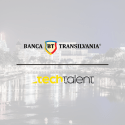In a world increasingly shaped by rapid urbanization and exponential technological growth, cities are no longer just geographical locations or centers of commerce and culture. They are becoming intricate digital ecosystems, constantly collecting, processing, and acting on data to improve the lives of their citizens. At the heart of this evolution lies one powerful, transformative force: software. The cities of tomorrow will not be built with bricks and mortar alone but with algorithms and APIs, dashboards and databases. Indeed, smart cities start with smart code, and writing software for the urban future is a challenge and opportunity that’s reshaping how we think about governance, infrastructure, and the very nature of human interaction in urban environments.
The Pulse of a City Is Data, But Software Gives It Meaning
Cities have always been data-rich environments, even before we had the means to capture or analyze that data. Every vehicle that passes through an intersection, every person tapping a subway card, every kilowatt consumed in a high-rise office tower – all of this contributes to a massive, dynamic stream of data that reveals how a city functions at any given moment. However, raw data alone is noise; it is through intelligent software systems that this noise becomes music – a real-time symphony of insights that can optimize traffic flow, reduce energy waste, respond to emergencies, and anticipate the needs of millions of people.
The key here is context. A traffic sensor embedded in a smart road surface might detect the volume and speed of vehicles passing over it, but it is software that interprets this data to reroute vehicles away from congestion, synchronize traffic lights for efficiency, or alert emergency responders to a nearby accident. The code isn’t just processing information; it’s making decisions, often autonomously, that impact real-world outcomes in real-time. This is why software development in the realm of smart cities is fundamentally different from traditional application design—it demands a deeper understanding of urban dynamics, public policy, citizen behavior, and infrastructure limitations.
Writing for Scale and Complexity – Code That Thinks Like a City
Designing software for a smart city is not like building a simple app with a fixed user base and predictable behavior. Cities are living, breathing organisms. They are inherently unpredictable and constantly in flux. A well-designed piece of code must therefore be robust enough to handle vast and varied data streams from IoT sensors, mobile apps, and municipal databases while being flexible enough to adapt to shifting priorities, evolving regulations, and technological advancements.
In this context, software needs to be modular, scalable, and highly interoperable. APIs play a crucial role, acting as bridges between different systems—such as public transportation networks, waste management facilities, and emergency services—ensuring that they can communicate with each other seamlessly. Microservices architecture, containerization, and edge computing are becoming foundational elements in smart city software development because they allow individual components to be updated, scaled, or replaced without disrupting the entire system.
Moreover, coding for a city means coding for resilience, as urban systems cannot afford to fail. A glitch in a ride-hailing algorithm may cause inconvenience, but a failure in a smart traffic management system could lead to chaos or even loss of life. This means developers must prioritize rigorous testing, fault tolerance, cybersecurity, and continuous monitoring. The stakes are high, but so is the potential for meaningful impact.
Citizen-Centric Design – Where UX Meets Urban Experience
One of the most important principles of building software for smart cities is placing the citizen at the center of every decision. It’s not enough for a system to be efficient or innovative—it must be usable, inclusive, and responsive to the diverse needs of a city’s population. This involves more than just user-friendly interfaces, it requires empathy-driven design that considers accessibility, language barriers, digital literacy levels, and socioeconomic disparities.
For example, a mobile app that allows citizens to report potholes or streetlight outages must be intuitive enough for an elderly user with limited tech experience while also being robust enough to integrate directly into a city’s maintenance ticketing system. Features like location tagging, photo uploads, and real-time updates create a feedback loop between the citizen and the government, fostering a sense of agency and trust.
In the same spirit, data privacy and ethical considerations must be baked into the software from the start. Cities collect vast amounts of personal data, from facial recognition in public places to GPS traces from smartphones. Developers must navigate the delicate balance between functionality and privacy, ensuring compliance with regulations like GDPR or local data protection laws, while also giving users control over how their information is used.
Open Source, Open Data, Open Minds
One of the most exciting trends in smart city development is the embrace of open-source platforms and open data initiatives. Rather than relying solely on proprietary software from big tech vendors, many cities are choosing to collaborate with the global developer community to build transparent, adaptable, and cost-effective solutions. Open-source projects provide foundational tools and frameworks that municipalities can customize to their specific needs, while also contributing improvements back to the community.
This open approach fosters innovation by allowing startups, researchers, and civic hackers to build on top of public APIs and datasets, creating solutions that city governments might never have imagined on their own. From apps that track air quality block by block, to algorithms that optimize garbage collection routes, these grassroots contributions often fill gaps that traditional top-down approaches miss. They also encourage a culture of experimentation and collaboration, where failure is not feared but learned from.
Open data also holds cities accountable. When transportation patterns, budget expenditures, or crime statistics are available to everyone, it empowers journalists, watchdog groups, and ordinary citizens to hold public officials to a higher standard. Transparency, driven by software, becomes a tool for democracy.
AI and Predictive Analytics – Tomorrow’s Problems, Solved Today
The true potential of smart city software lies not just in responding to present-day issues, but in anticipating and preventing future ones. This is where artificial intelligence and predictive analytics come into play. Machine learning algorithms can identify patterns that human analysts would miss, such as correlating minor traffic violations with future accident hotspots or using weather forecasts and historical data to pre-position snow plows before a storm hits.
AI can also help optimize resource allocation, whether that’s predicting peak electricity demand, fine-tuning public transport schedules, or even adjusting water pressure in anticipation of usage spikes. By feeding real-time data into predictive models, cities can become not just reactive, but truly proactive—mitigating problems before they arise, saving time, money, and lives.
However, integrating AI into urban systems is not without challenges. Bias in training data, lack of transparency in decision-making, and the risk of over-automation are all issues that must be carefully managed. Smart code must not only be intelligent but also ethical and explainable.
A New Role for Developers – Code That Changes Lives
For developers, writing software for smart cities represents a unique and deeply rewarding opportunity. This is code that has the potential to directly impact the quality of life for millions of people. Whether it’s making a commute shorter, an emergency response faster, or a government service more accessible, the work of smart city developers extends far beyond the screen. It’s a form of digital public service, where each line of code can contribute to safer streets, cleaner air, or more equitable access to resources.
This shift also calls for a new kind of developer—one who understands both technology and civic responsibility, who can collaborate with urban planners, sociologists, environmental scientists, and policymakers. It requires a mindset that values sustainability, inclusivity, and long-term thinking over short-term gains. As cities become more complex and interconnected, so too must the teams that build their digital infrastructure.
Conclusion
Across the globe, forward-thinking communities are already demonstrating what’s possible when intelligent code is paired with progressive policy—where software guides public services, sensors optimize resource use, and digital platforms seamlessly connect people to the systems they rely on every day. These are not distant dreams but real, functioning examples of how technology is quietly transforming the very fabric of urban life. Yet this is only the beginning. As populations grown and the pressure on infrastructure mounts, the need for environments that are smarter, more sustainable, and deeply attuned to human needs becomes increasingly urgent. Developers, designers, and technologists are stepping into a critical role—not merely maintaining essential systems, but shaping thriving, adaptive ecosystems where code enhances everything from mobility and healthcare to safety and sustainability. At the heart of this transformation is software that’s not only powerful but ethical, scalable, and inclusive—software that sees the modern metropolis not as a grid of roads and buildings, but as a living, breathing network of people, data, and possibility. As we envision the urban futures ahead—with autonomous transit humming down clean-energy corridors, predictive algorithms guiding preventive care, and digital twins simulating entire neighborhoods before a single brick is laid—we must remember that such innovation begins in the smallest of places. It starts in lines of code, crafted by those who dare to imagine better. Because in the end, intelligent environments begin with intelligent code, and the blueprint for tomorrow’s world is already unfolding—line by line.



